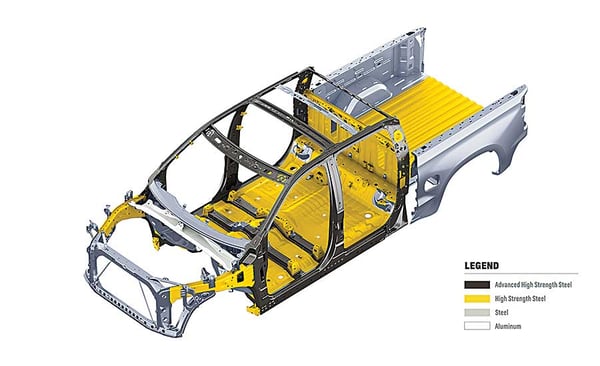Emerging technologies such as fully-electric fleets and autonomous cars have us feeling that we are approaching a George-Jetson-like era. Behind these remarkable industry movements are other initiatives that will make these technologies possible.

One such initiative is lightweighting. The goal of lightweighting is to reduce the overall weight of a vehicle to improve fuel economy (or range for electric vehicles) and meet ever-tightening emissions standards. OEMs have tackled the challenge of lightweighting several ways, including changing the shape and composition of certain components or removing them altogether. Lately, OEMs have made significant strides by using lighter materials for new vehicles.
Automotive engineers are continually adopting lighter materials for the body, interior, chassis, powertrain, and underhood applications. But with looming deadlines and unfamiliar materials to work with, engineers are rethinking their design process to better tackle these challenges.

Weber, Austin. “Automotive Lightweighting.” Assembly, 2018, www.assemblymag.com/articles/94341-lightweighting-is-top-priority-for-automotive-industry.
Challenges to Lightweighting
OEMs face three significant challenges when switching from their tried and true design to one with unfamiliar materials: 1) designing with unknown material properties, 2) maintaining safety and, 3) mitigating the number and cost of prototypes. To mitigate the challenges engineers face in the design and prototyping stages, they adopt advanced simulation techniques to work through new concepts early on.
1. Simulation Helps Engineers Understand the Properties of New Materials
As OEMs seek to reduce weight in their vehicle lineups, it is essential to understand how new, lighter materials will behave under different environmental and operational conditions. Historically, engineers would get a better understanding of the behavior of materials after rigorous prototype tests. Now, with advanced simulation methods, engineers can use software to input the material properties and model how the lighter materials will fare, for example, how a lighter aluminum will withstand the intense thermal demands of the exhaust system.
Notice the material property change as the user selects different parts.
2. Simulation Helps Maintain Safety
Even at such an early stage, engineers can gain a better prediction of how vehicles will perform in service, durability, and safety using simulation. These models can show which materials will lighten the load but also maintain the vehicle's reputation and competitive advantages.
Using lighter materials may help engineers achieve their fuel economy benchmark, but it may also put other pieces of the design at risk, such as components that operate under extreme thermal circumstances. Simulation will ensure that the material properties of the new, lightweight materials will enable the vehicle to maintain proper thermal management under a variety of operating conditions.
3. Simulation Can Reduce the Amount of Prototyping
These types of simulations can be created and run with hundreds of different environmental and operational conditions to distinguish which design meets the established criteria best. The chosen design can then be created as the physical prototype. Engineers can save time and money by only creating and iterating on a handful of physical prototypes. Reducing the number of prototypes increases speed to market, accuracy, and optimizes the entire process.

One well-known example of incorporating new materials into an existing design is Ford's redesign of the F-150. Ford faced challenges as they transitioned the truck to an aluminum body and incorporated advanced materials into the powertrain, battery, and seats. The lighter body and component weight reductions diminished the overall weight by approximately 700 pounds and gave Ford's most popular truck a critical advantage in fuel economy. The redesigned F-150 also saw improvements in towing, hauling, and dent resistance.
Ford was able to reduce the amount of prototyping using advanced simulation software. They could then go into their prototype build with “more confidence and have fewer iterations” (Beckert).
The Right Simulation Program
As OEMs continue to define more stringent criteria for fuel economy, engineers must find a way to maintain thermal management and safety for components as they move toward lighter weight materials. These design changes will create a more successful transition if they are accompanied by an update to the engineer's design process.
Simulation offers a faster design method that delivers more insight early in the process. It is crucial to find a simulation software that can offer results within your product development cycle and deliver results you can trust.
References
Beckert, Beverly A. “Why Lightweighting Is a Game Changer in Automotive Design.” Altair, 2016, www.altair.com/c2r/sf2016/why-lightweighting-is-game-changer-automotive-design.aspx.
